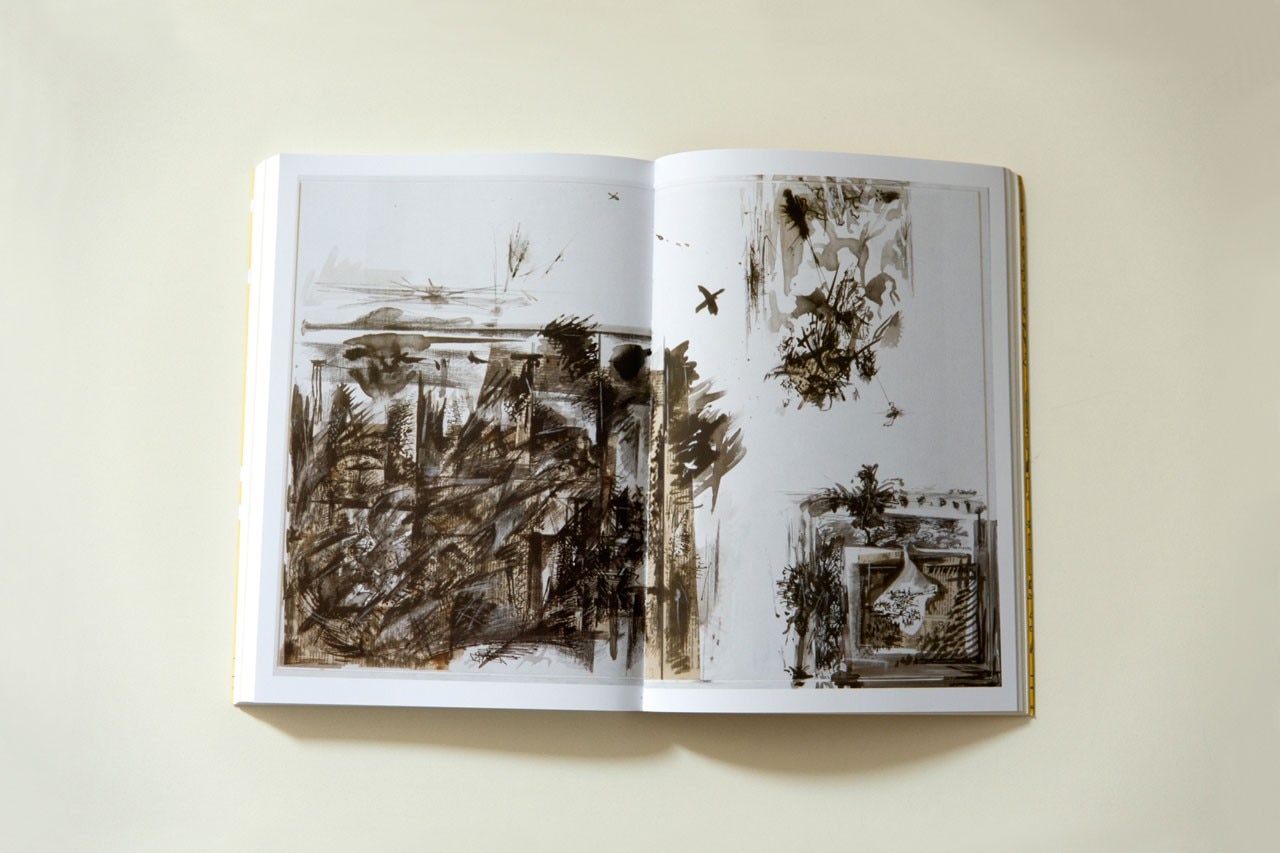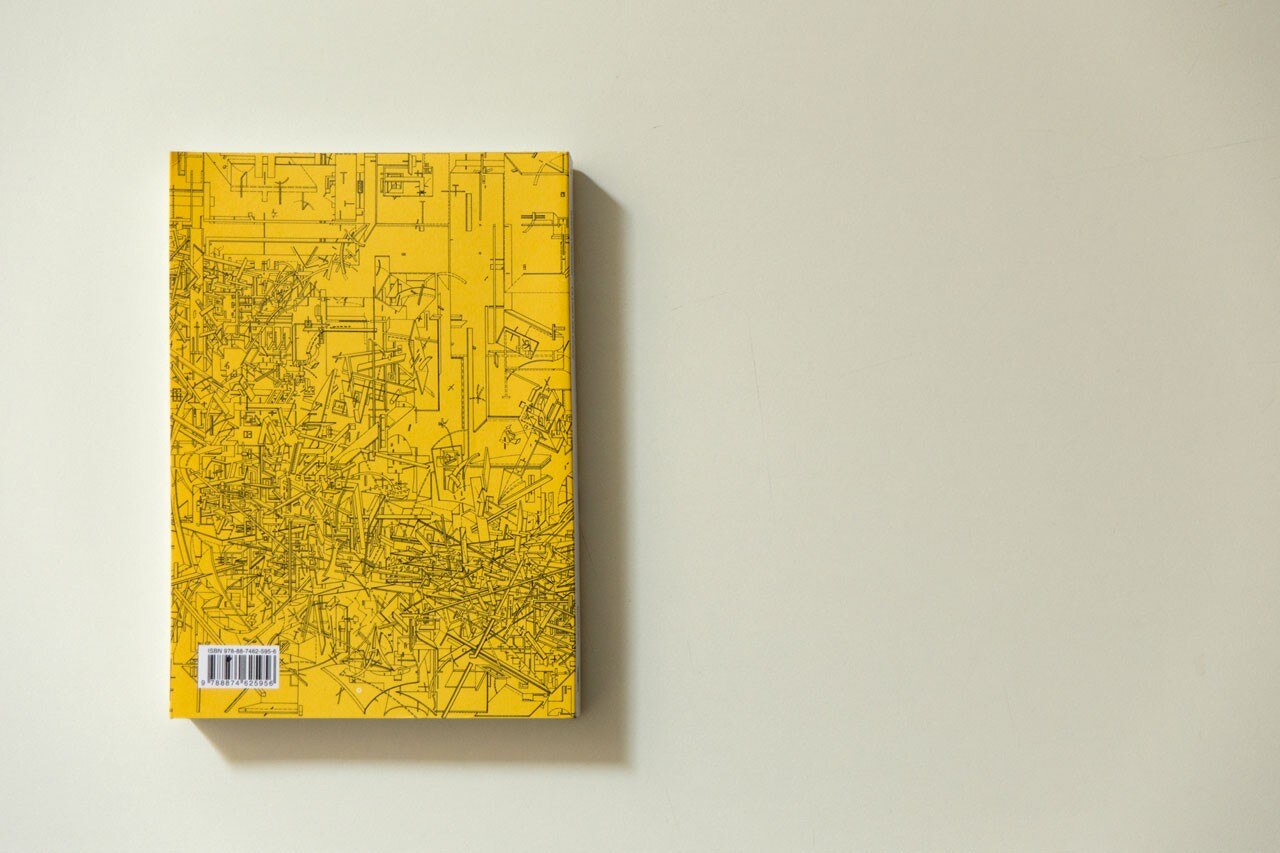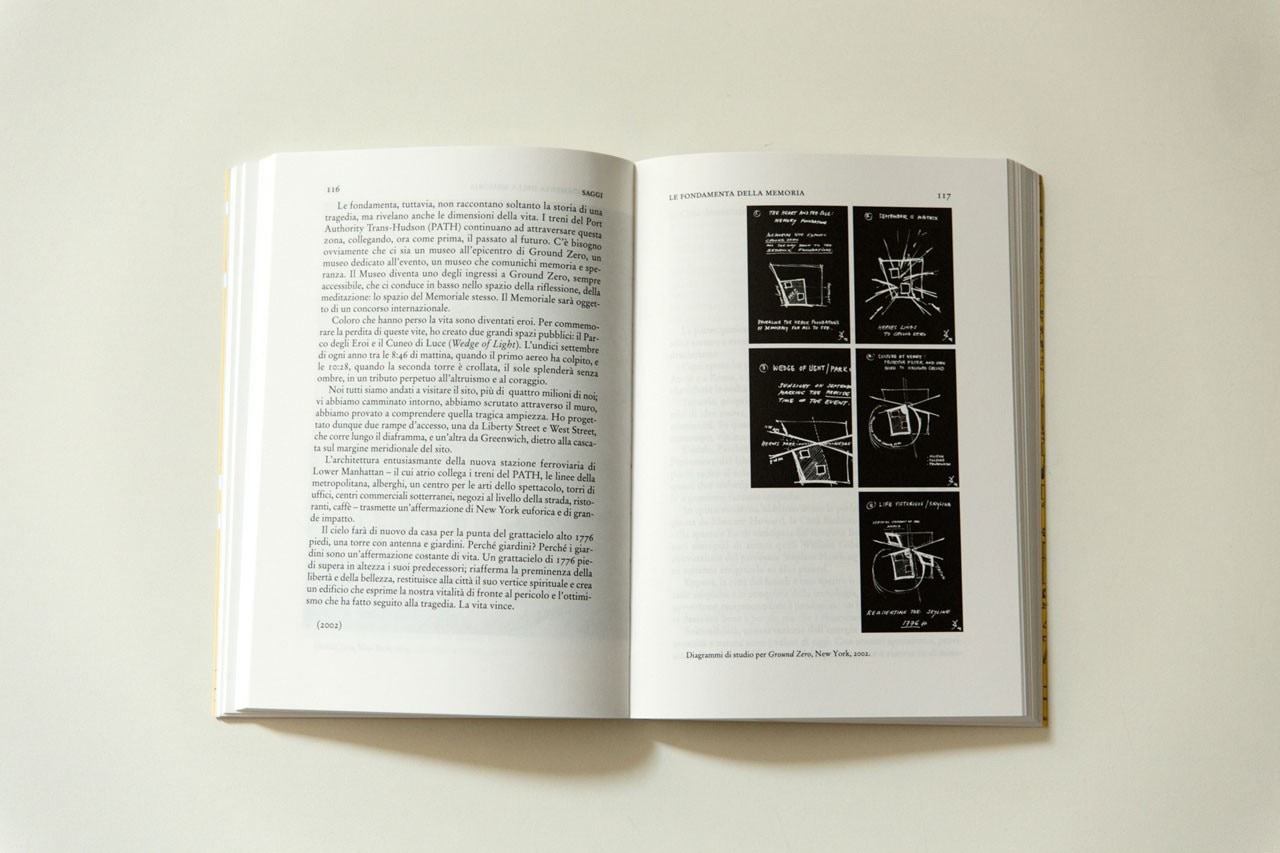
With just the same zeal, it is not the image that prevails in Daniel Libeskind’s drawings and words but the eagerly roving eye, during which process his vast areas of knowledge light up as he absorbs the form and significance of lines and signs. In the foreword to this packed collection of writings, drawings and machines, Lev Libeskind explains that the Jewish Museum in Berlin, his father’s first architectural project, was entitled The Line of Fire, i.e. “that leap forward through the flames” to build a home? that has accompanied human existence since prehistoric times.
The museum, which passes through flames and lines to silence the dispute between architecture and history to show disaster transfigured in space, is certainly the key project in Libeskind’s career and the text illustrating it helps readers understand its genesis, inspirations and design paths. Libeskind’s words are echoed in notes by Dario Gentili, who edited this edition and who stresses the centrality of the notion of void in the Polish architect’s experimentation. Libeskind even had an opportunity to discuss this notion with Jacques Derrida, and precisely on the subject of the Jewish Museum in Berlin.
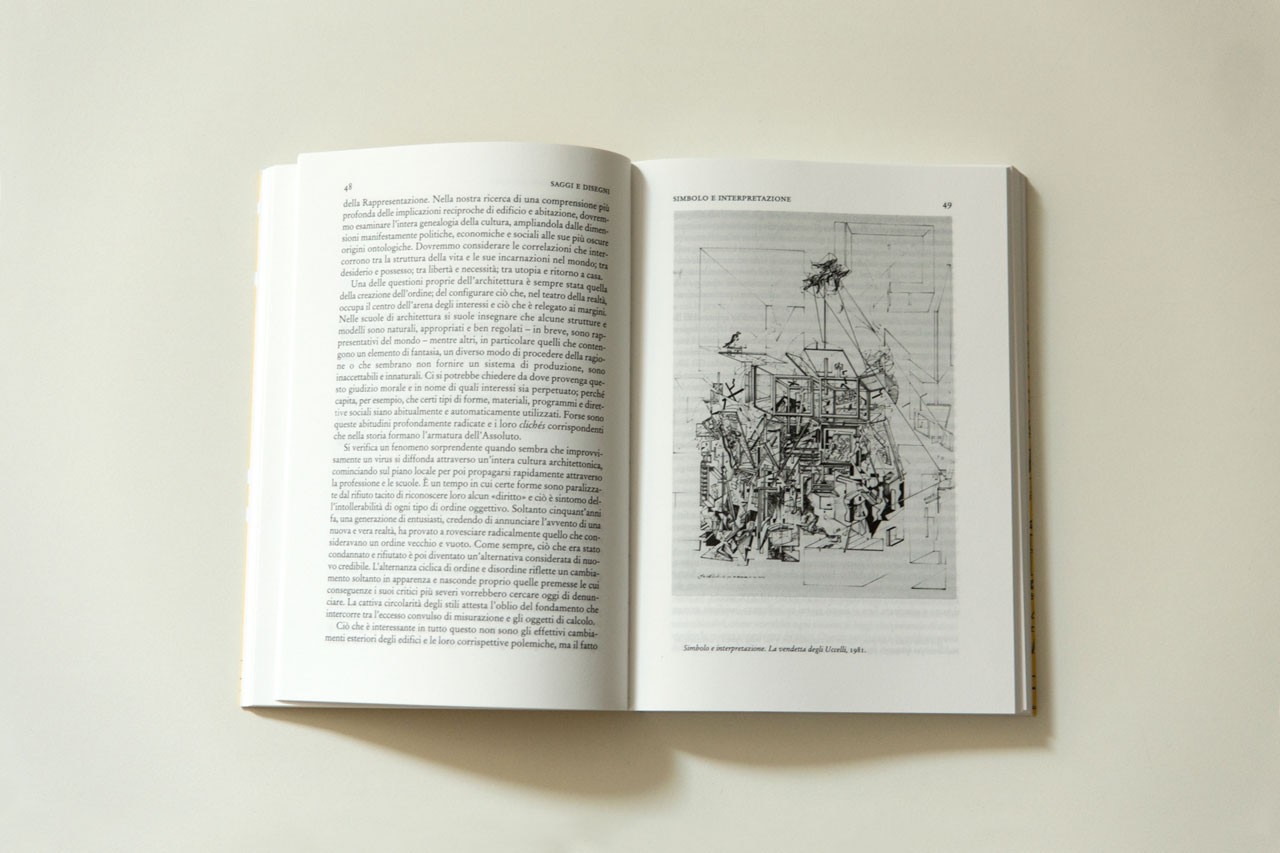
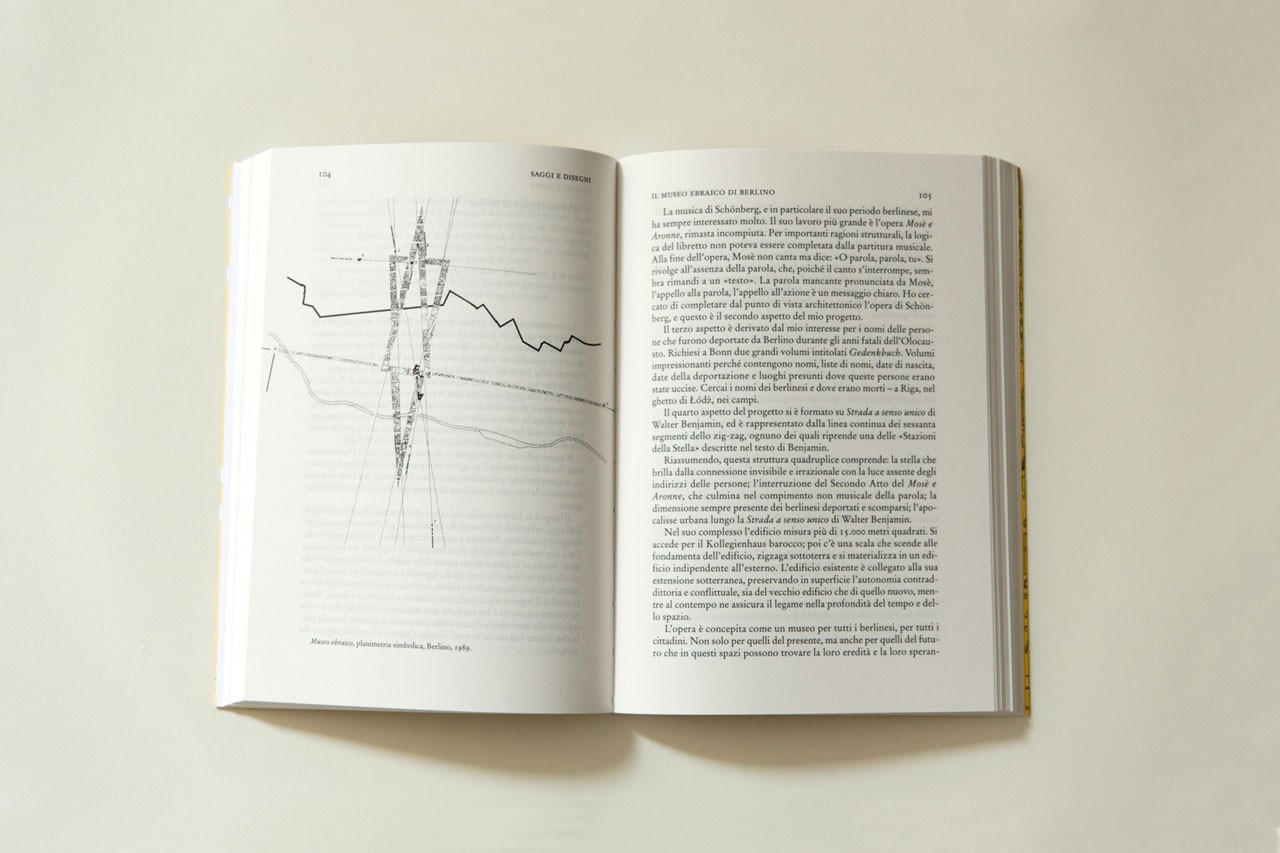
It is Libeskind’s void destined for eternal anticipation that moves along a broken line. It is certainly no chance that, as pointed out by Derrida, Berlin’s identity runs along the same line, the line of the wall, that fell in the fire of liberation during the Museum’s development and construction, and that the city symbolizes all the divided cities in the world, including Jerusalem.
The line of fire explores, narrates and decodes, via the architect’s own words and signs, with the satisfying result of making the final image more complex and unveiling Libeskind’s operational and theoretical universe, which can be pursued in many directions and where “the margins are as important as what is said, just as in the Talmud.”
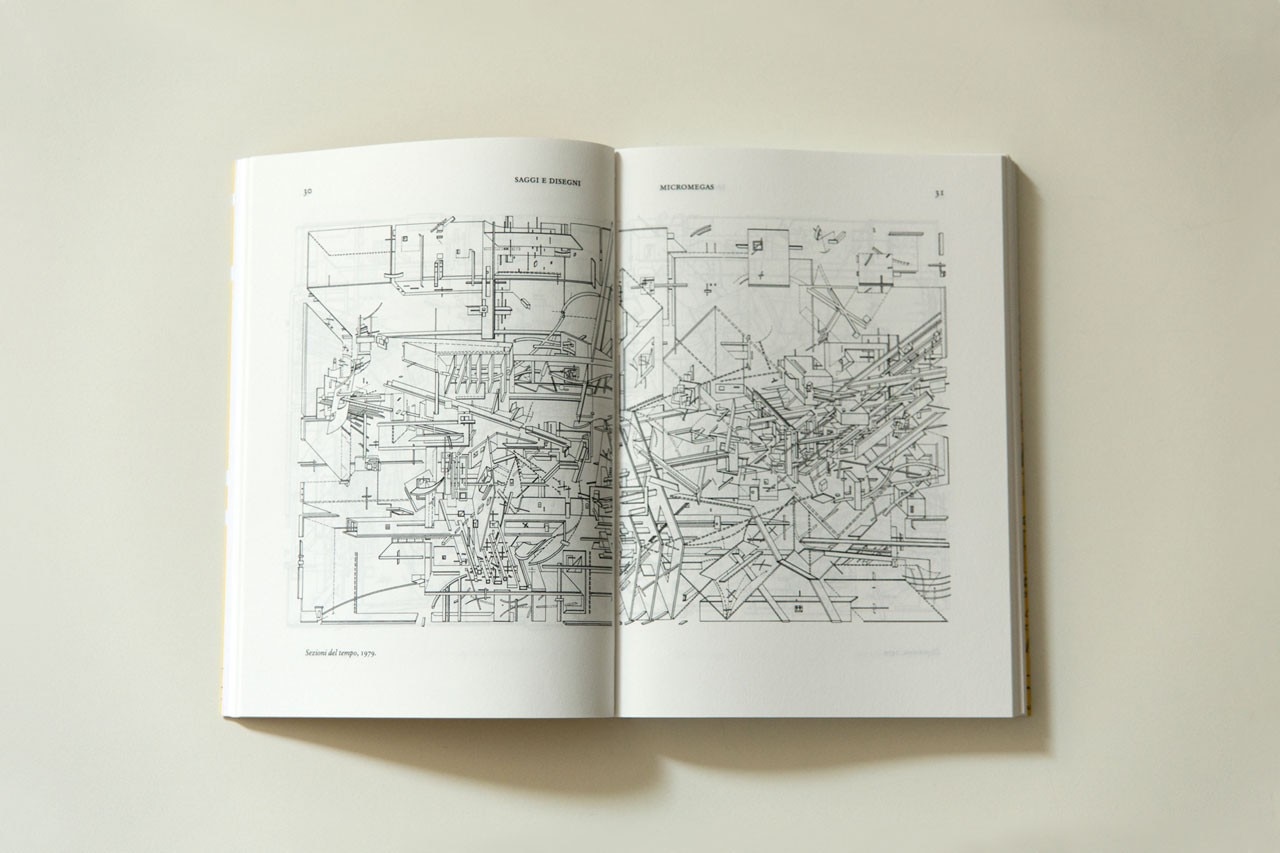
The formal results may well differ but both Libeskind and Rossi seem to defend the same void, adopting with differing degrees of awareness the “laceration within a certain order” as a design practice.
On his part, in a piece entitled Semplicemente un percorso written in 1983, Aldo Rossi performs what he himself calls a parallel reading of Libeskind’s work, in an attempt to see in it his own desire to represent “what is unrepeatable”. Rossi’s interest in Libeskind is, indeed, due to the richness of thought, “of mental, mathematical and speculative elements [that] come together in a sort of formal disaster”, and this interest is sustained by a self-analysis via writings and drawings, many of which now in this book.
